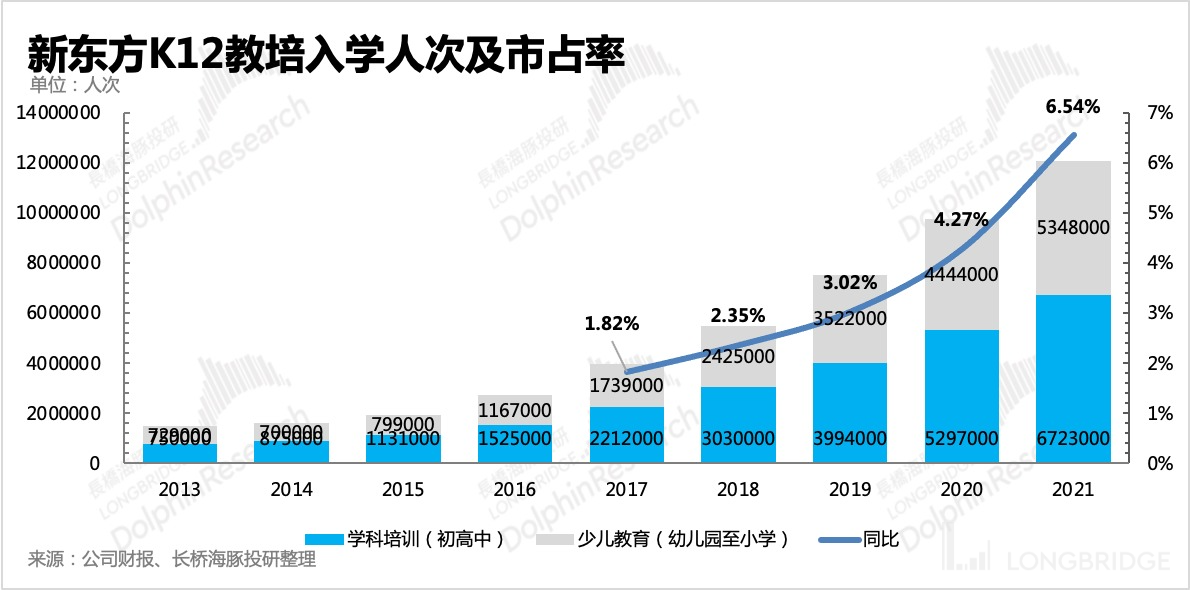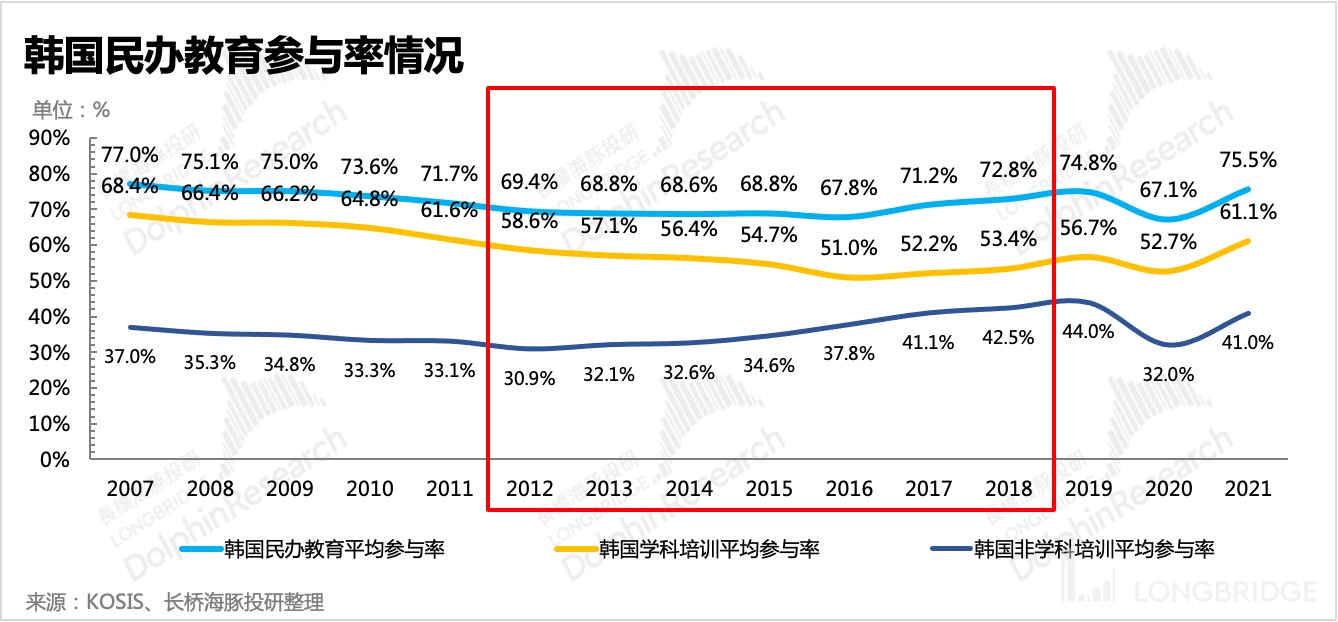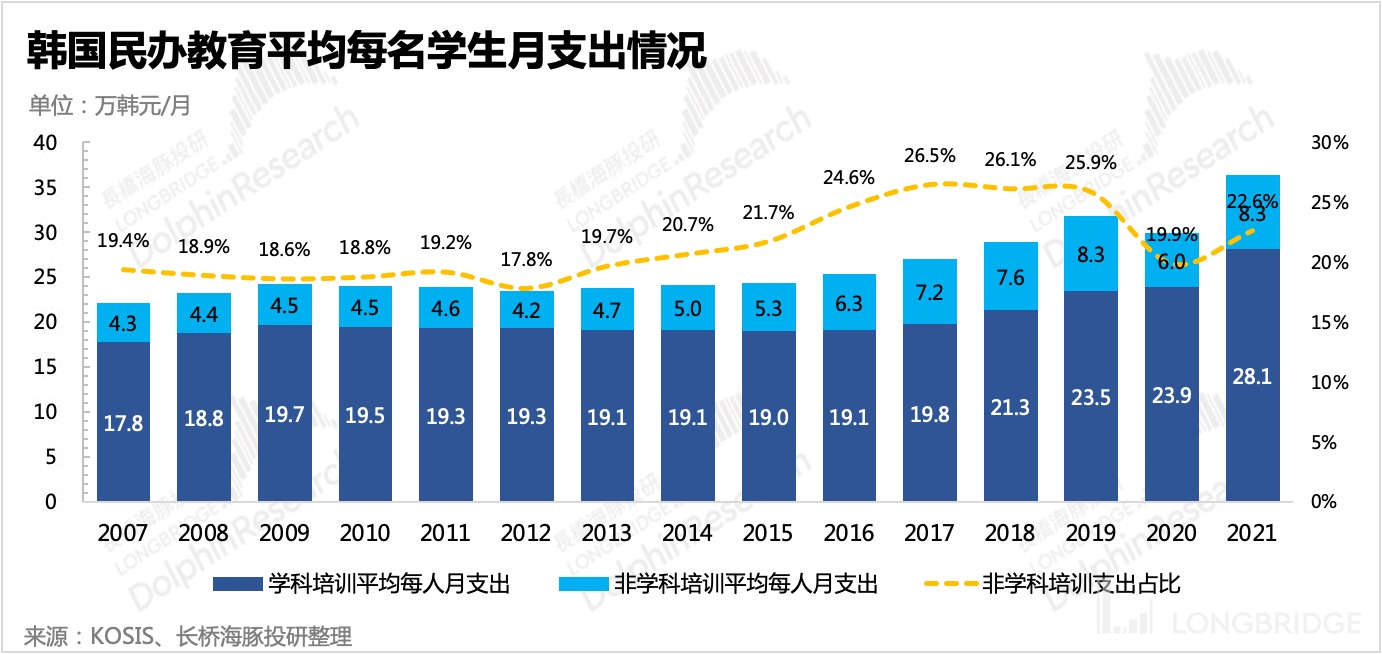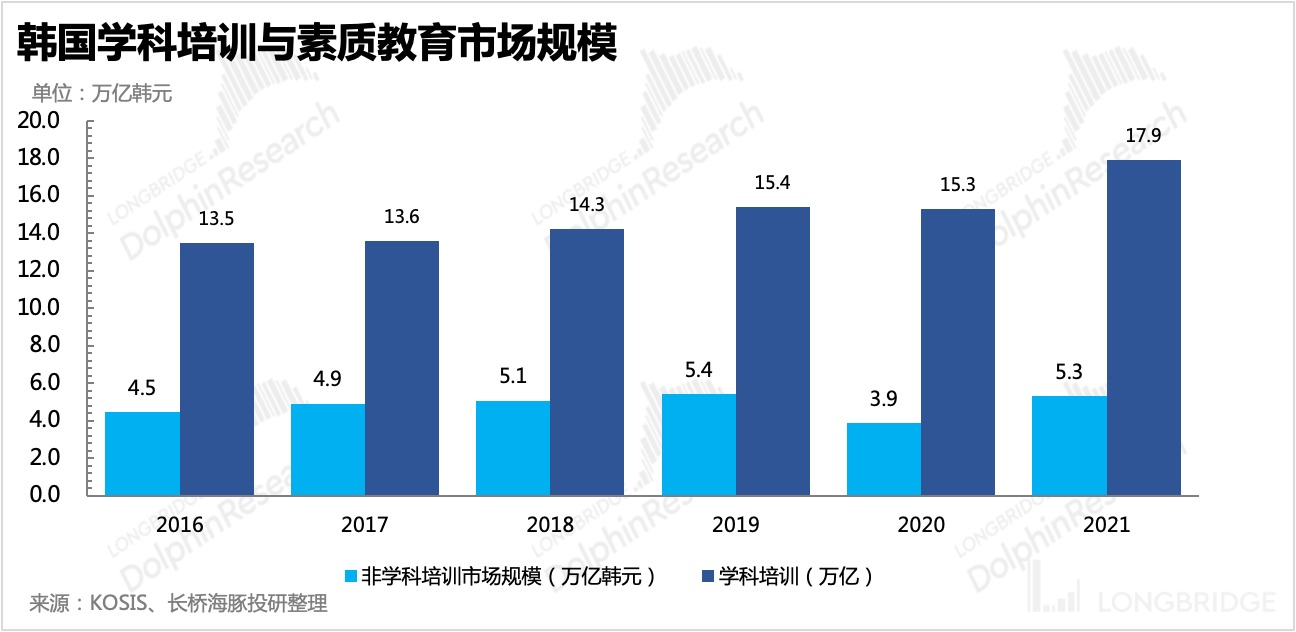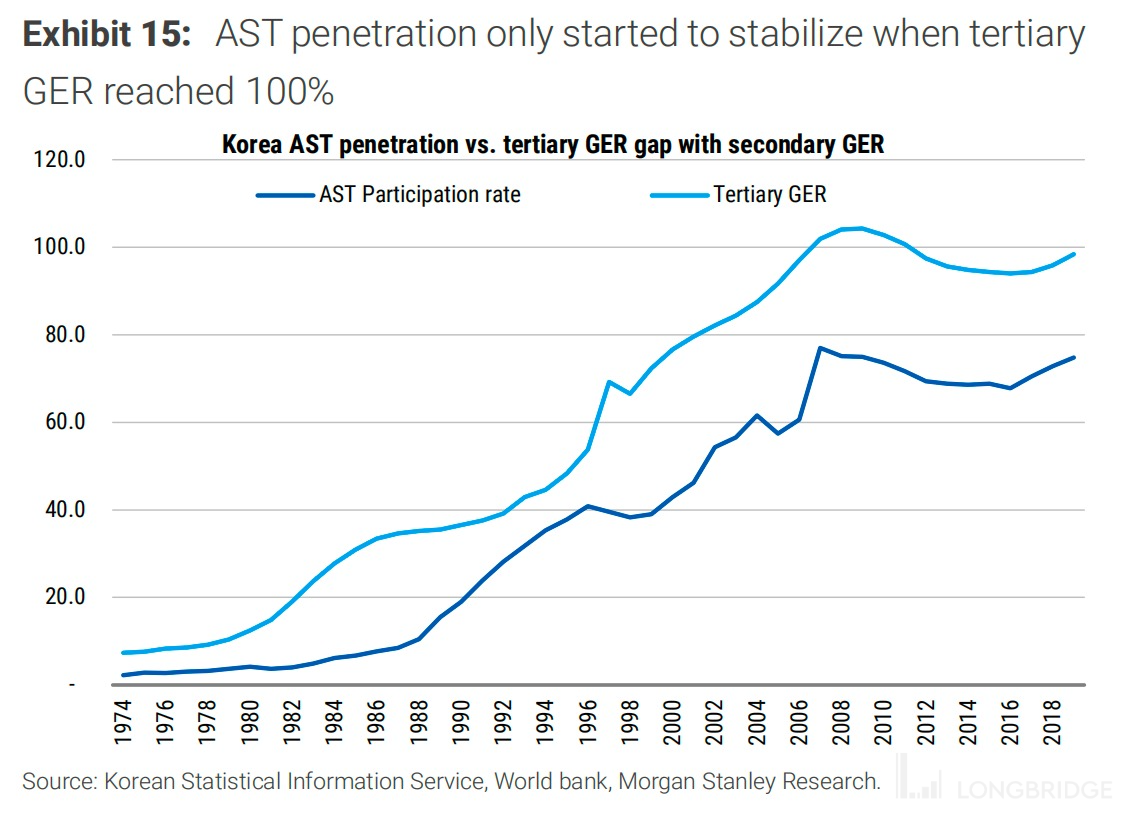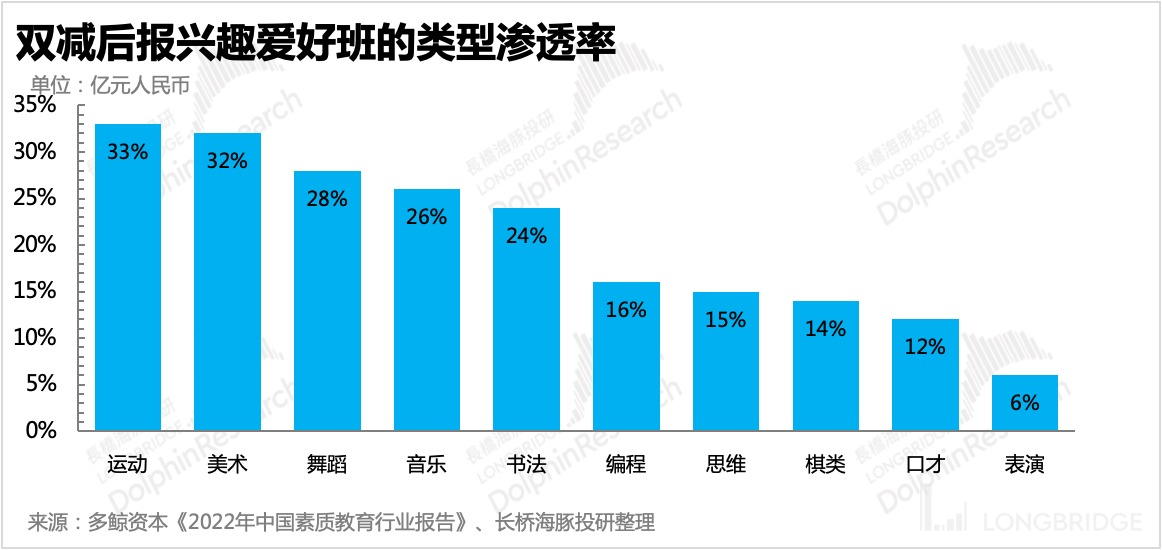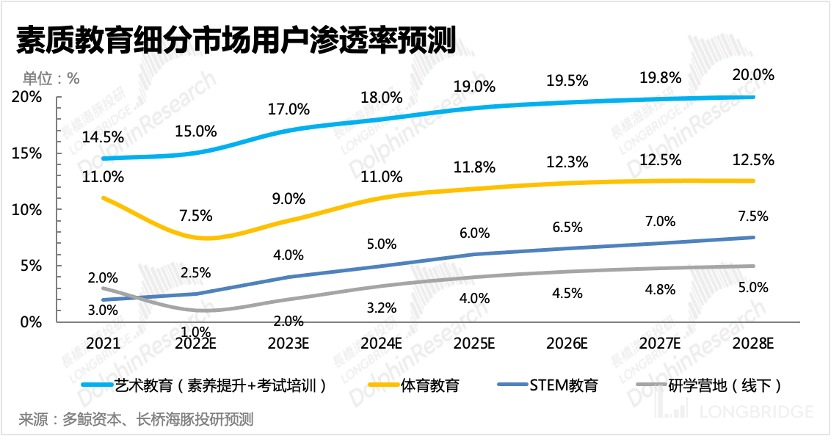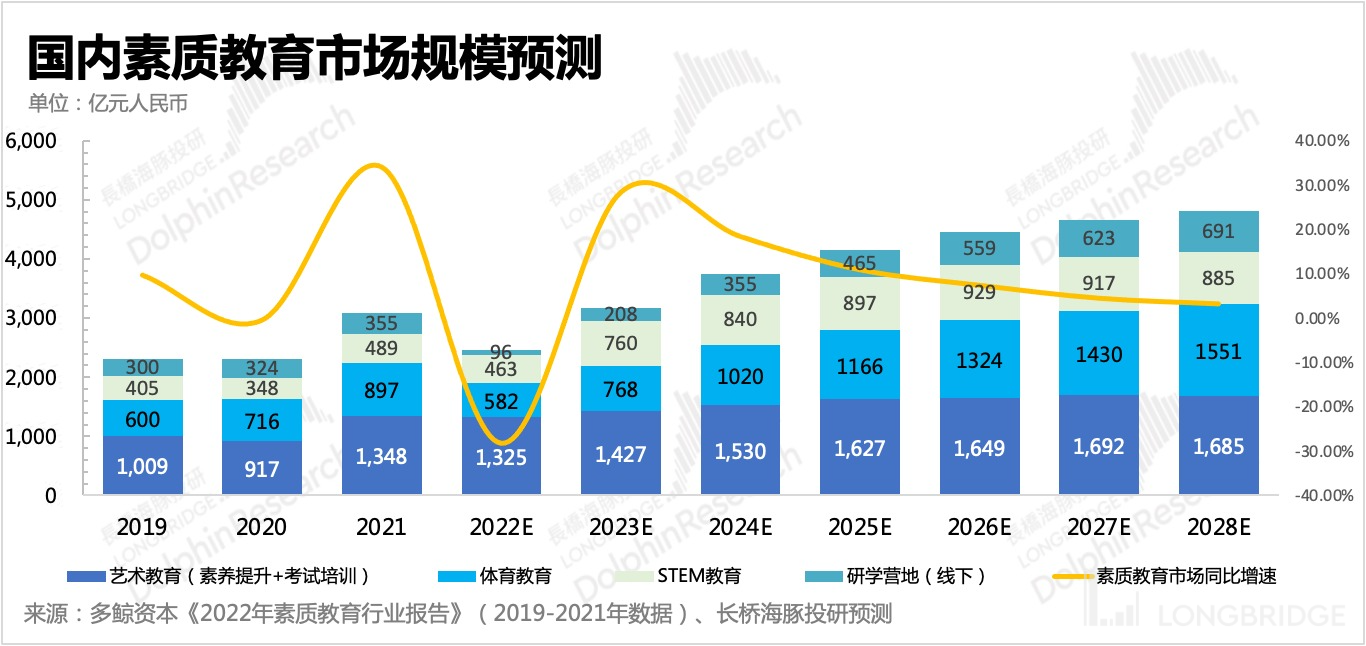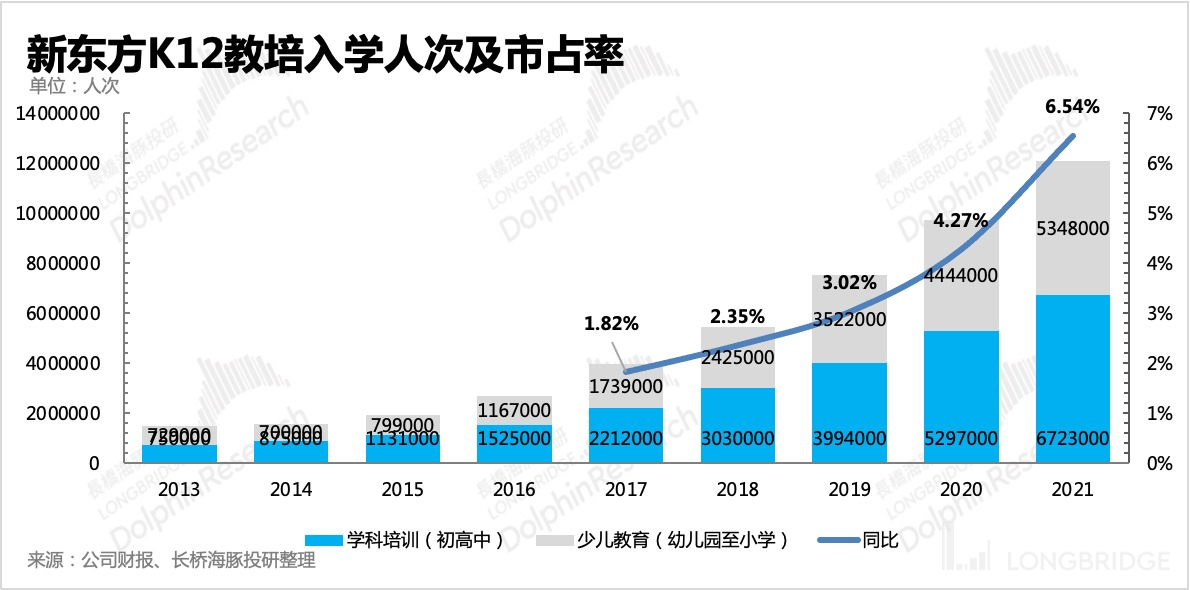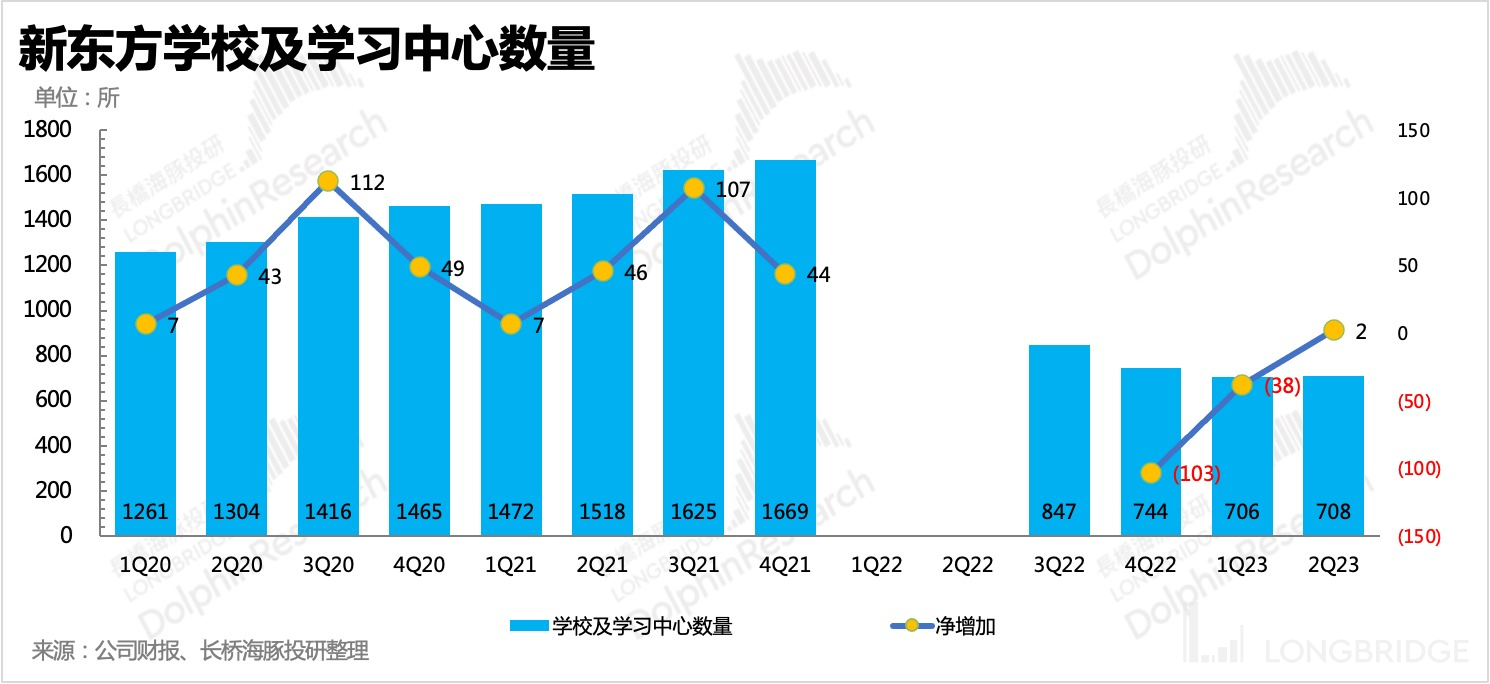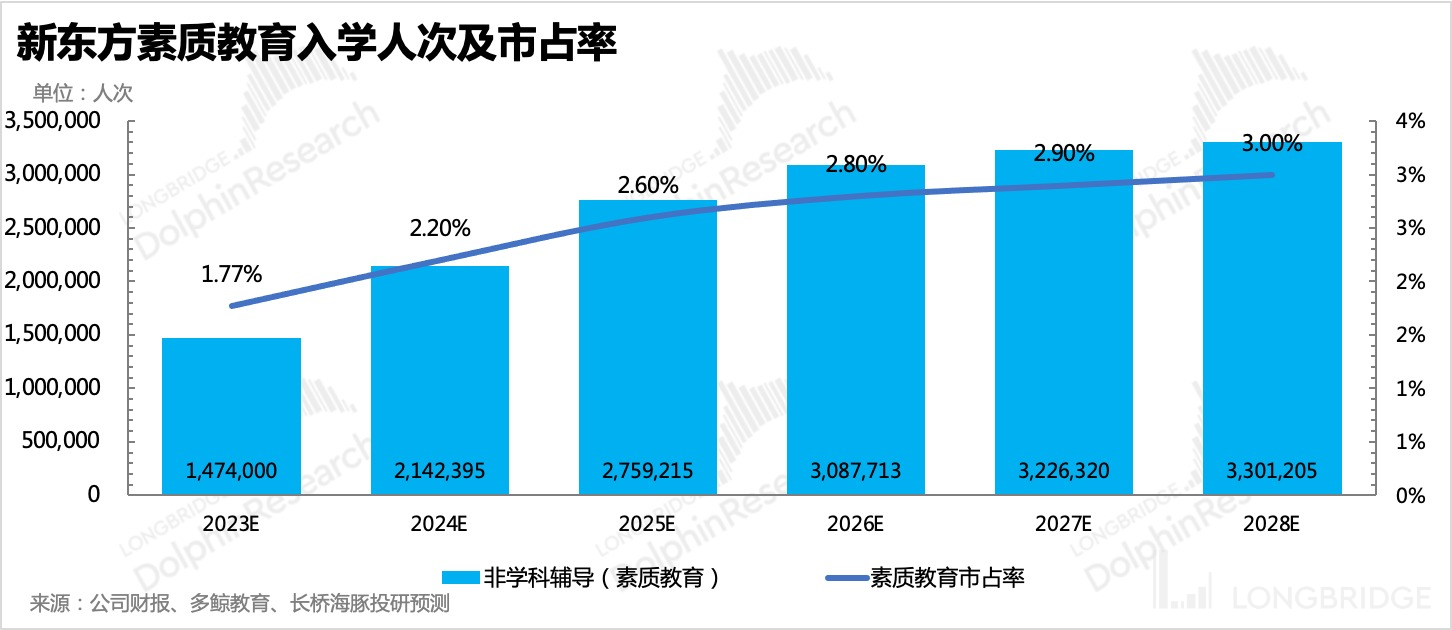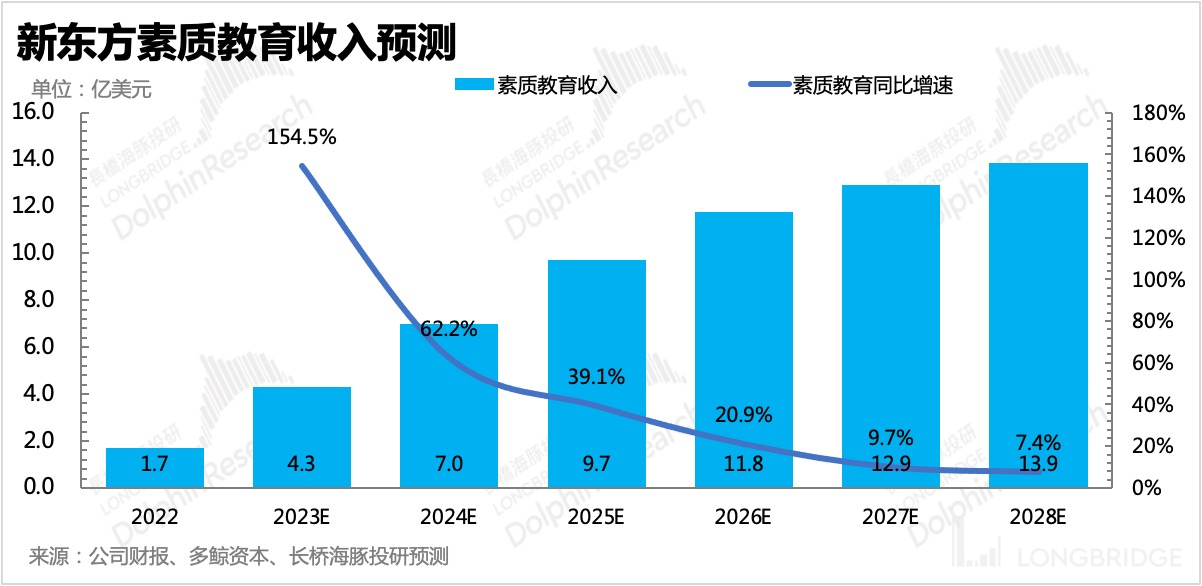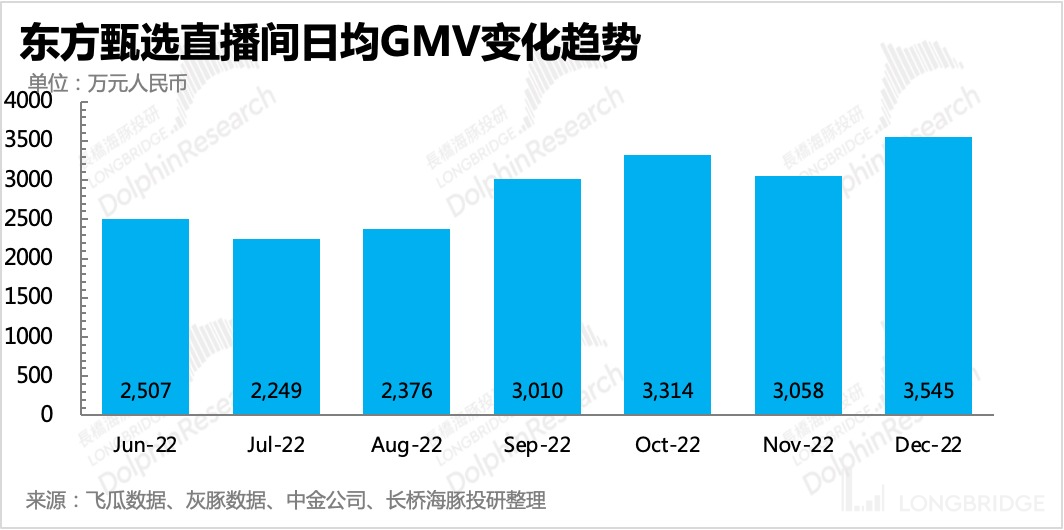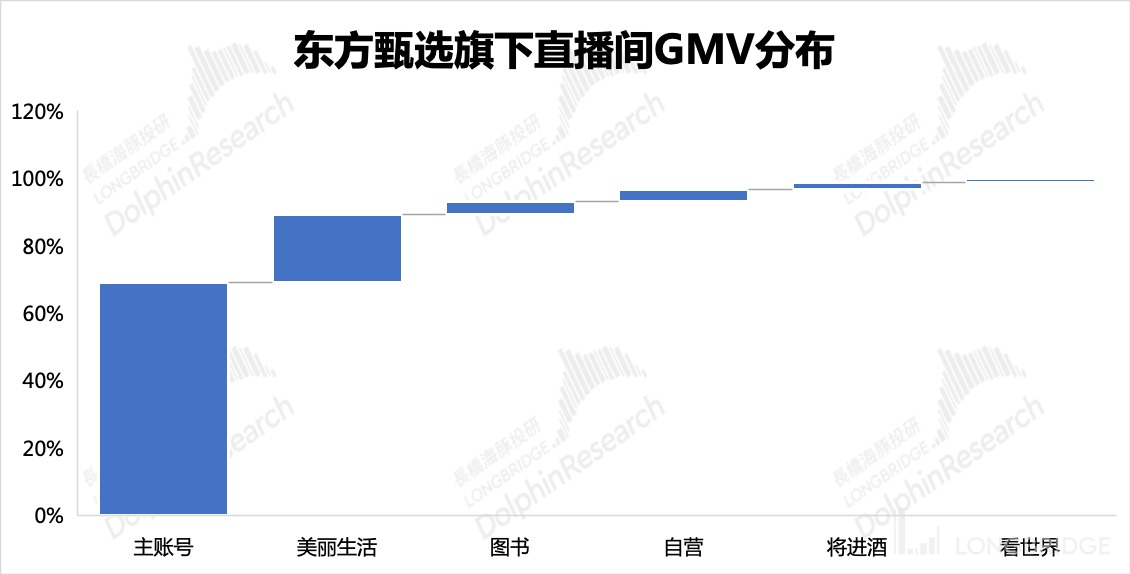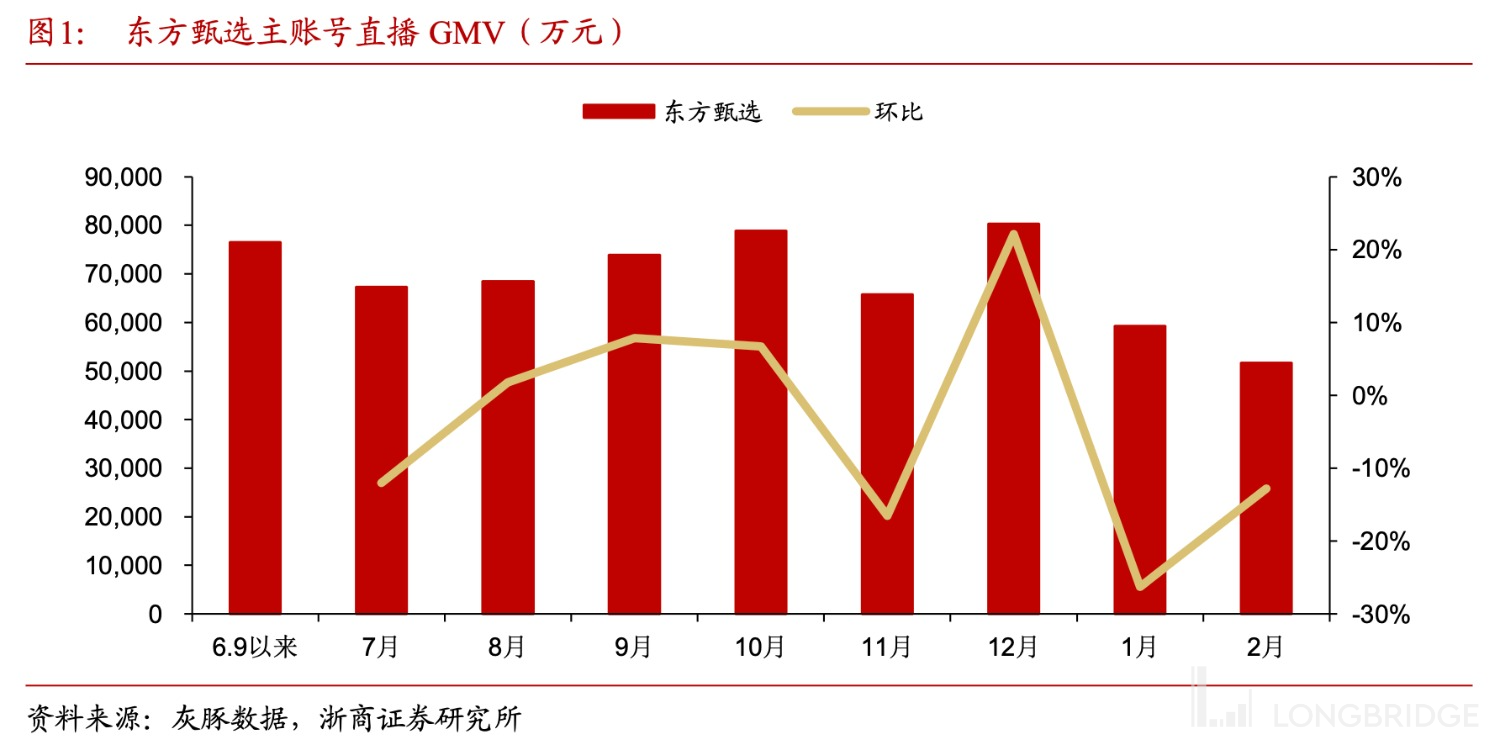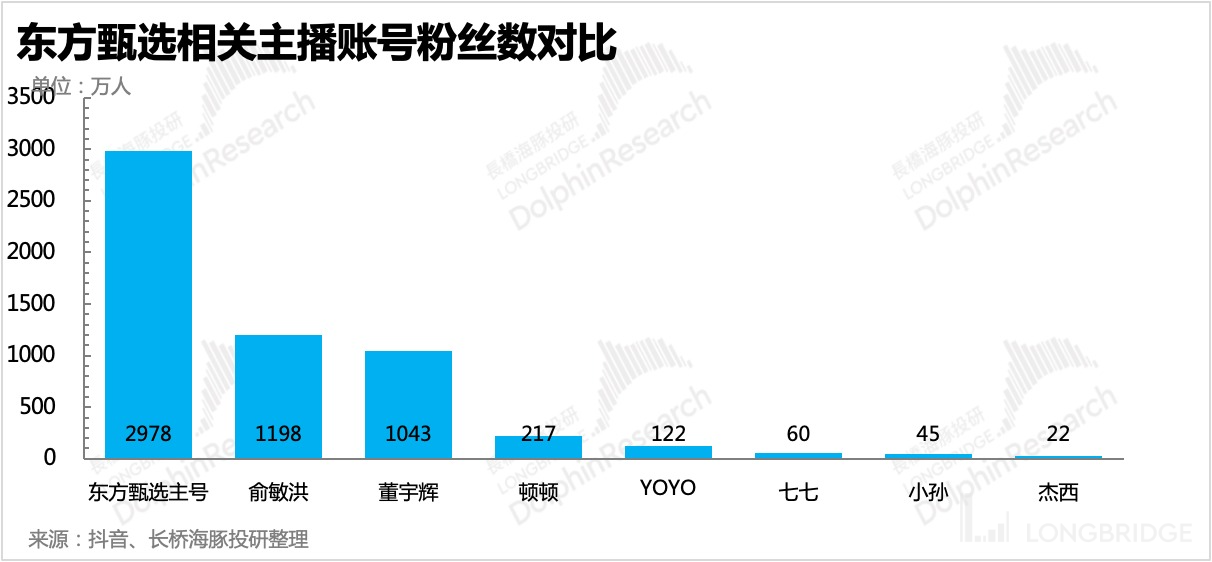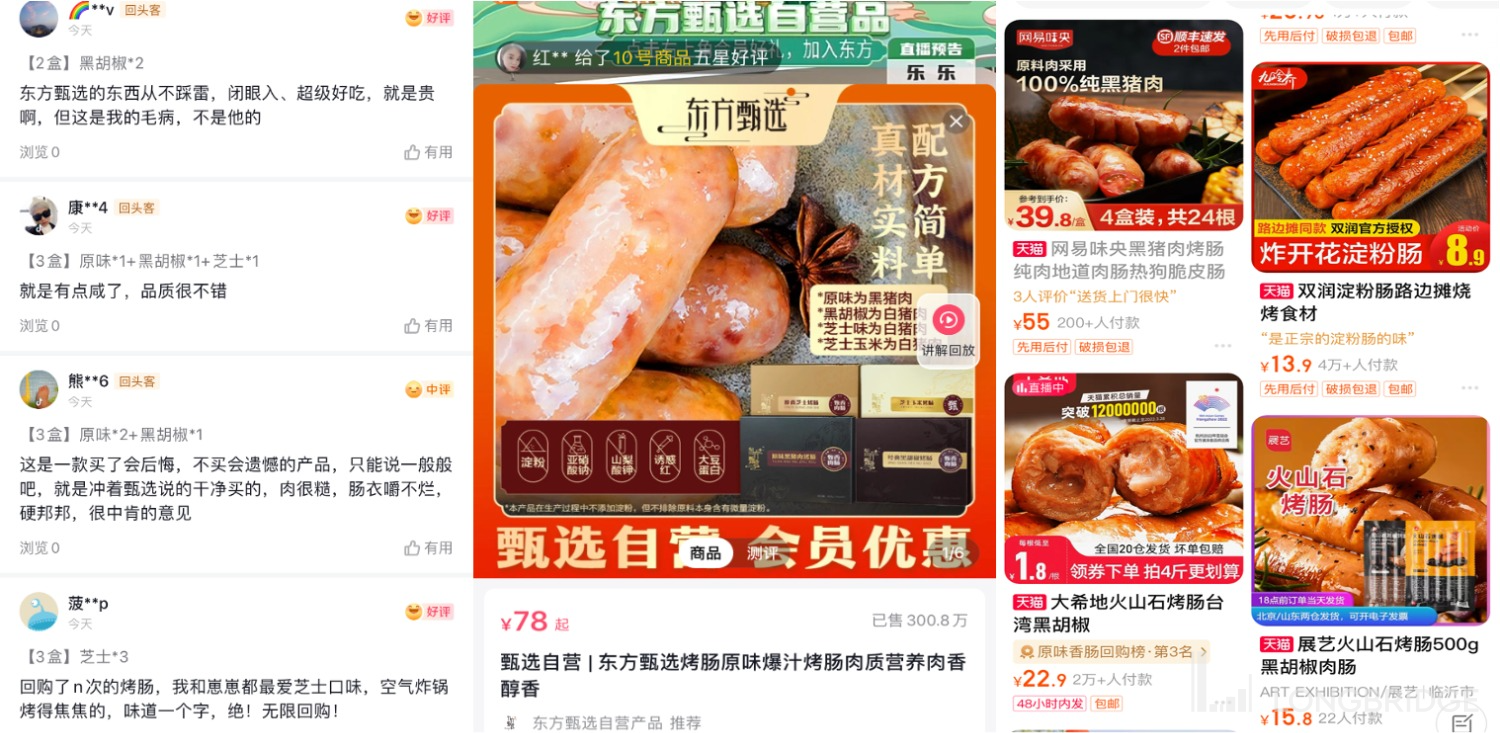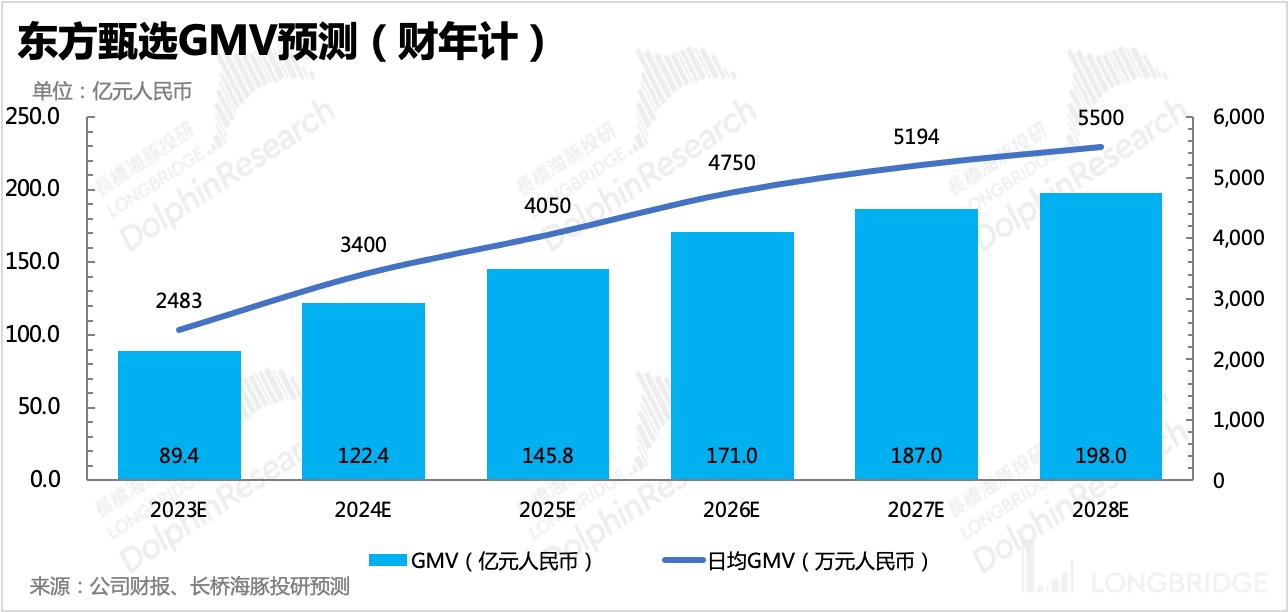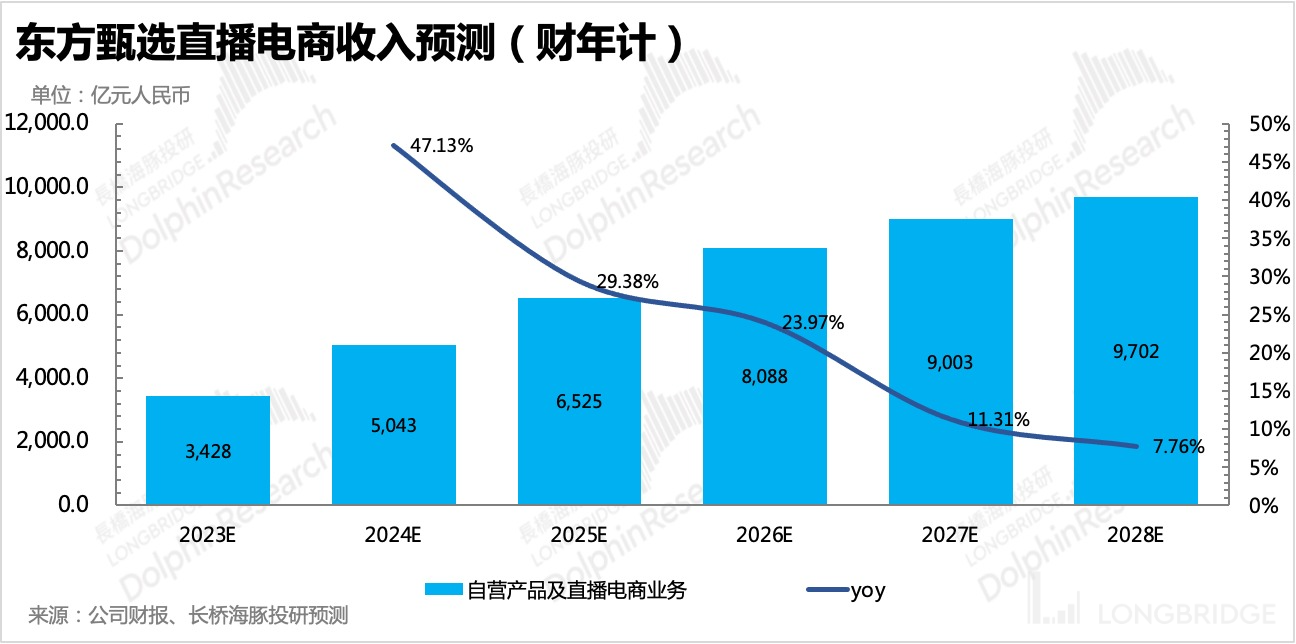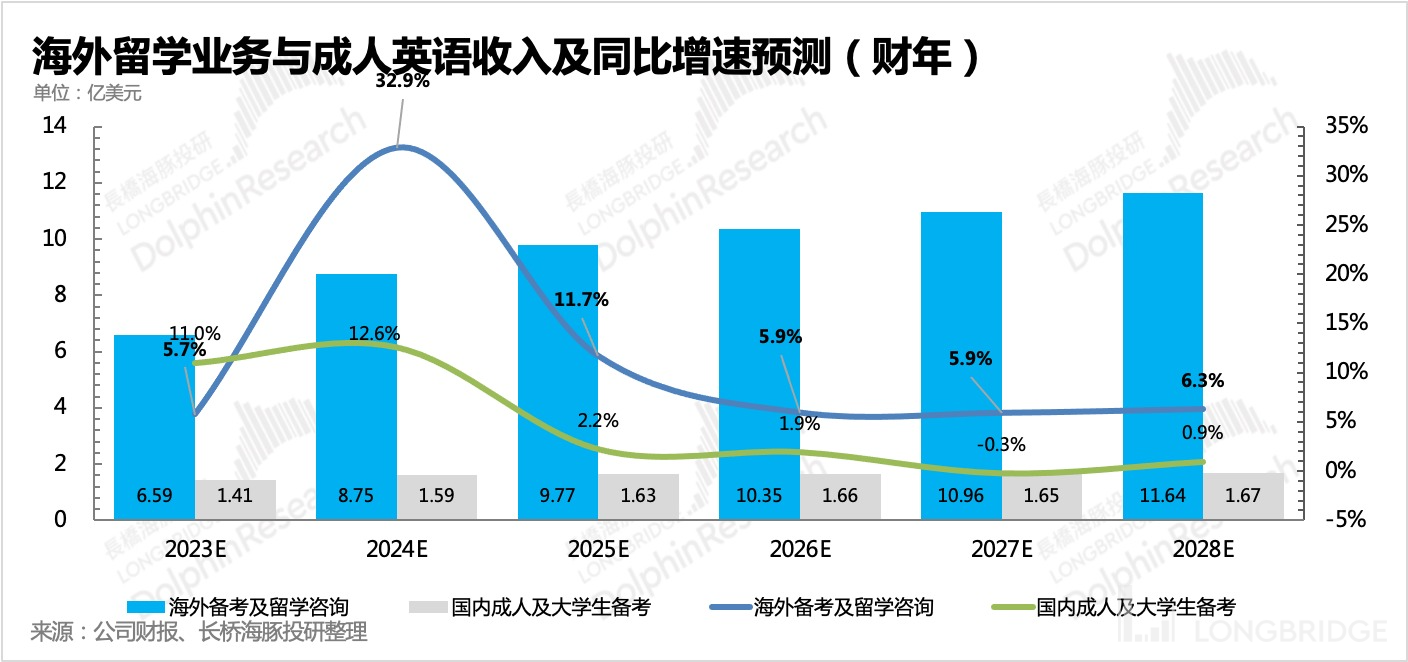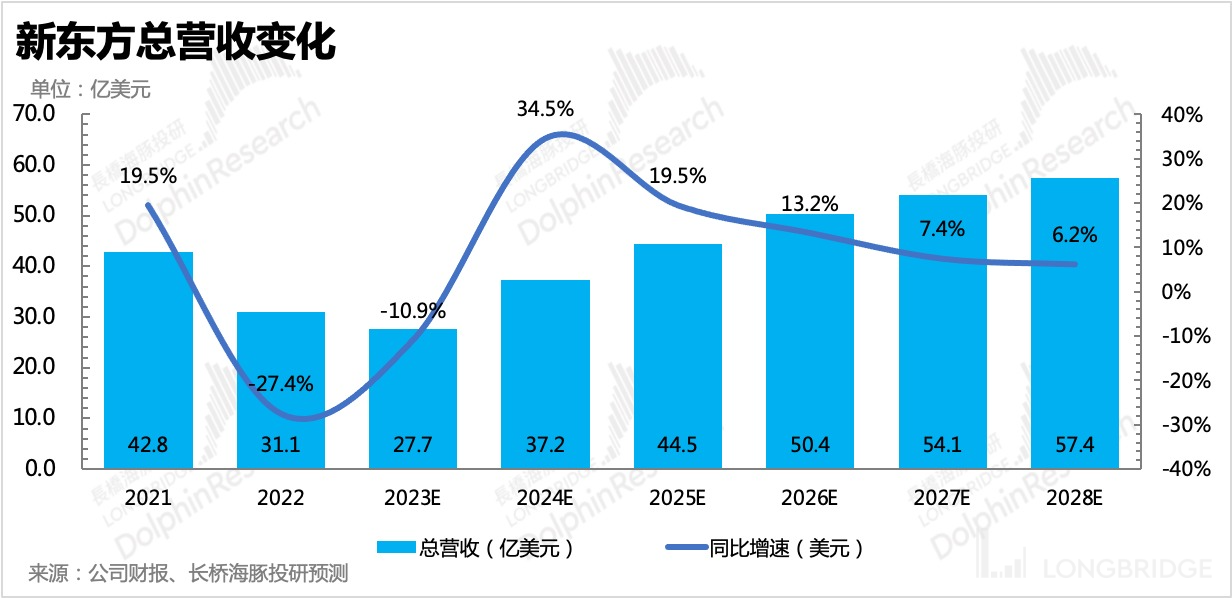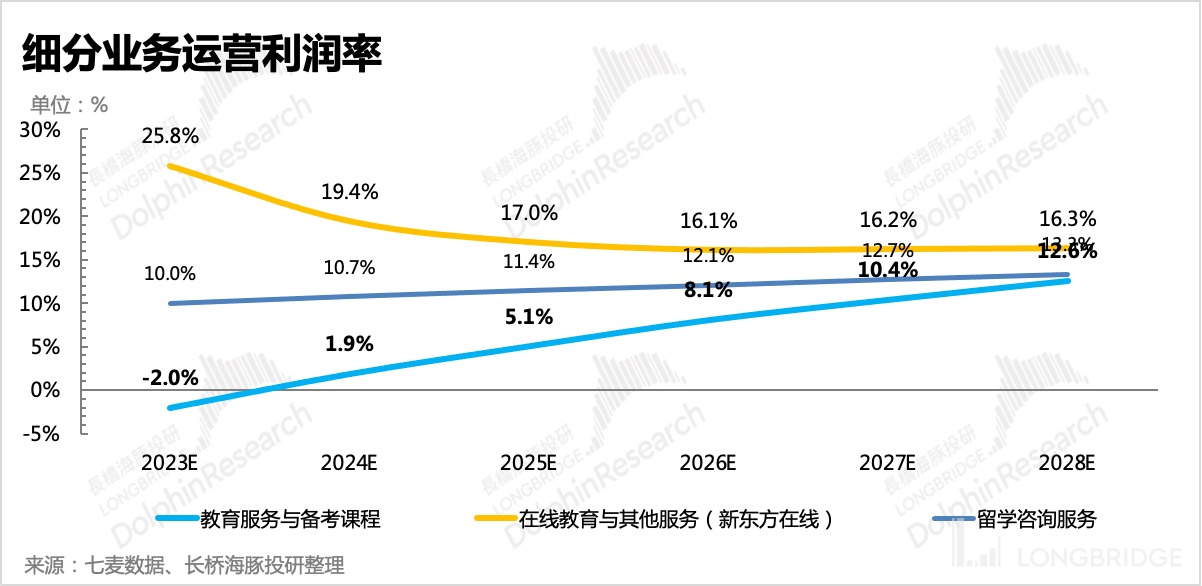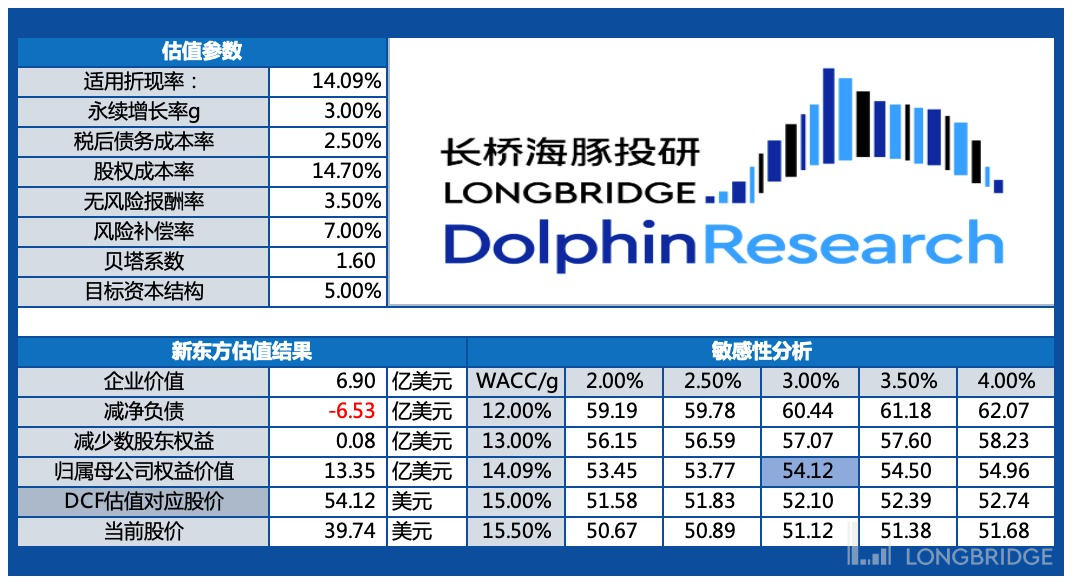
 Likes Received
Likes Received Posts
PostsCash builds a solid foundation, and Dong Yuhui can't handle New Oriental.

Hello everyone, I am Changqiao Dolphin!
After surviving the pandemic, New Oriental.US relied on live streaming e-commerce to stay afloat, but due to Dong Yuhui's vacation, the GMV of Dongfang Zhenxuan, which came earlier than expected, caused a pullback in New Oriental's market value. For a while, the discussion about how Dong Yuhui is handling New Oriental is non-stop.
However, is the future value of New Oriental, which has more than 60% net cash to market value ratio, dependent solely on Dong Yuhui?
Dolphin believes otherwise, and that is where we have a significant difference in expectations compared to the market. Rather than the emotional baggage and self-operated model disguised as direct e-commerce, and the live-streaming e-commerce model with a KOL core, we believe that only by overcoming our fear of education and returning to rationality gradually, can we focus on the education business mainly on quality education and studying abroad. Only then can we provide New Oriental with more effective upward momentum.
The current transformation opportunity is like the year New Oriental entered the K12 education and training industry in 2008. It took two years for the company to double in 2009-2011. However, in the year of performance outbreak in 2016, the company doubled in only one year.
The performance realization of offline education requires a certain process, such as completing equipment procurement and building a teaching team. But Dolphin believes that since learning centers and basic operation teams can be used immediately, the pace of promoting quality education will be much faster than that of K12 education in the past.
Therefore, when New Oriental completes one performance realization after another, the market will re-evaluate the value of the education industry. Based on this mid-to-long-term logic, Dolphin believes that New Oriental's valuation bottom and long-term elastic support line are generally clear:
-
In the short term, the net cash of 4.3 billion U.S. dollars basically supports the extreme bottom of New Oriental (under no significant systematic risk), plus the value of 1.2 billion U.S. dollars of old business, totalling 5.5 billion U.S. dollars. This is a relatively safe entry point.
-
The performance of the live streaming business mainly affects the fluctuation space of New Oriental's stock price before the market reassesses the value of the education industry. According to the expected assumption of 2023 and assuming 16% after-tax operating profit margin, 35x PE, and 55.6% equity discount, the corresponding value of the live streaming is about 1.5 billion U.S. dollars, so the total value is a short-term neutral valuation of 7 billion U.S. dollars.
-
In the mid-to-long term, when the quality education business is gradually realized in actual performance, the market will gradually overcome its fear of the education industry, and the value of New Oriental's new quality education will be reassessed. Therefore, the 2 billion U.S. dollars worth valuation of quality education will become the core pillar for New Oriental to further expand its valuation space, eventually adding up to a valuation of 9 billion U.S. dollars.
If you are interested in interpreting research reports on Chinese concept stocks, please feel free to add the WeChat ID "dolphinR123" to join the investment research group, get Dolphin's in-depth research reports in real-time, and discuss investment opportunities with experienced investors.
1. How much does the market believe in the "new story"?
As an education giant, the "double reduction" has cost New Oriental a lot, wiping out almost 99% of its growth. While clearing the K9 subject tutoring business, New Oriental began to tell two "new stories": "quality education" and "live streaming e-commerce." Despite the fact that quality education is also a market worth hundreds of billions of dollars, accounting for one third to one half of the expenditure in South Korea's non-disciplinary education market, the market's expectations for New Oriental's development in quality education are not high, but rather focused on live-streaming sales that have little to do with the core education industry.
Of course this is not difficult to understand. On the one hand, the proportion of live-streaming sales in New Oriental Group's total revenue has exceeded 25%, and the profits are also considerable. On the other hand, Oriental Selection, which has a decent sales volume, caught the wave of market hype and its market capitalization reached HKD 75 billion. As the holding company, New Oriental's market value has risen accordingly.
Simply put, the only driving force for New Oriental's counter-trend rebound, whether from a fundamental or market sentiment perspective, after the rapid decline in performance due to the closure of the K9 business, is the "live-streaming sales" story. Therefore, after the Spring Festival, when the daily GMV of Oriental Selection began to show signs of peaking, New Oriental Online's valuation bubble was burst and it fell by 20%.
It is not surprising that the market is currently "ignoring" quality education. Quality education is a slow business, especially in the process of going from 0 to 1. It's like when New Oriental announced the launch of its K12 subject tutoring business, it took nearly 10 years, from 2008 when it launched its subject education brand "Youth Edu" to 2017 fiscal year, when K12 subject tutoring revenue exceeded half of total revenue.
But at that time, New Oriental had less than 2% market share and had huge growth potential. In early 2017, the enrollment rate for high school subject tutoring increased by more than 40%, and the increase in New Oriental's enrollment rate was mainly due to K12 business. The expansion of schools and learning centers also indirectly confirmed the strong demand for enrollment by parents, and New Oriental's course "capacity" was almost full.
Therefore, the market continued to add chips, and looking only at the calendar year period corresponding to the 2017 fiscal year (May 2016 to May 2017), New Oriental's market value almost doubled, and Forward PE rose from 20 to 40.

Therefore, conversely, before the revenue scale of quality education reaches a certain level/revenue ratio, it is difficult for the market to imagine the long-term potential of quality education in the short-term valuation.
In addition, the inflection point of resolving the population problem has not yet been reached, which is a difficult point to avoid for any segmented consumer market that focuses on minors, including quality education from kindergarten to junior high school.
Furthermore, the market has also been traumatized by the education industry. Therefore, it is not easy for the valuation of education business to increase in the short term. But this is also precisely where the market expectation gap exists. From a medium- to long-term perspective, the contribution of quality education to valuation cannot be ignored, and now it is more like an opportunity to rewind the timeline back to 2008.
2. Can New Oriental Get a Piece of the Trillion-Yuan Quality Education Market?
Because it is a slow business, the market needs to be large enough to create some room for imagination in the short term. Compared with New Oriental's K12 subject training in the past, New Oriental's transformation into quality education now no longer requires repeated investment in classroom and educational equipment infrastructure, so the market penetration speed will be faster than before.
1. Reassess the Quality Education Market
In the previous article "Can Dong Yuhui Rely on Education for New Oriental's Future?" the Dolphin focused on the history of education reform in South Korea and changes in the market. After subject training institutions were urgently banned in 1980, as demand still existed (low screening rates and high higher education enrollment rates), subject training existed in an invisible form.
However, since the gross enrollment rate for higher education in South Korea reached 100% in 2007 and the series of corresponding measures were taken in 2008 (the score system was changed from a grading system, non-examination scores were given more weight, a free semester system was introduced, vocational education was encouraged, STEM courses were introduced, etc.), the participation rate of subject education began to show a clear downward trend, but alternative demand for non-subject education in art and science increased and the participation rate of students continued to rise.

From 2008 to the present, the ratio of average spending on non-subject education per student in South Korea to spending on subject education has increased from 1/4 to 1/3, which means the market size of quality education at present is equivalent to 1/3 of the size of subject education, approximately KRW 53 trillion in 2021.


Therefore, if we simply refer to the development status of the education market in South Korea, it means that the market size of quality education in China is also approximately 1/3 of the market size of subject training in the past under normal circumstances.
However, one difference between China and South Korea is that after 2000, South Korea cancelled the previous ban on supplementary lessons in terms of legal supervision, which was a period of real meaning of laying flat, while China was policy-based prohibition. Therefore, the rise of quality education in South Korea during this period reflects the increase in "endogenous demand" under two driving factors, which has promoted the proportion of quality education in subject education from 1/4 to 1/3:
-
On the one hand, it is driven by the policy reform of the college entrance examination in 2008;
-
On the other hand, it is influenced by the long-term decline in population (especially for two consecutive years of negative growth in the new population in South Korea in 2001 and 2002), and the gross enrollment rate of higher education has almost reached 100% after 2010. The demand for subject coaching naturally reduces, but the inertia demand for educational investment is partially transferred to quality education.

From this perspective, in the Chinese education market, which is also facing a decline in the new population and strict policy control over subject education, although some families have the ability to take the old road of Korean villa cram schools, there is a greater possibility for most Chinese families' educational needs, especially under the educational concept of young parents born in the 80s and 90s, to shift/overflow to quality education.

Based on the above analysis, after reasonable adjustments, Dolphin believes that the penetration rate of quality education after the "double reduction" has two driving forces: "endogenous improvement" and "substitution improvement", so it will reach 1/3 or even half the scale of the original K12 subject training market faster.
Dolphin has made estimates of the overall quality education market size from the perspective of population data, market penetration rate, and customer unit price. Under the mid-term steady state, the market size is about 400-500 billion yuan, accounting for 40% of the previously predicted K12 after-school tutoring market size of 1.2 trillion yuan (before the "double reduction"), which is basically consistent with our hypothesis of quality education accounting for 1/3 to 1/2 of the original K12 subject training market size.
Due to space constraints, the calculation process is not expanded here. If you are interested in the calculation process, you can add the assistant WeChat account [dolphinR123] for communication.

 2. Can the brand value be realized again?
2. Can the brand value be realized again?
In 2008, relying on its brand influence in fields such as overseas studying consultation and adult English, New Oriental announced its transformation to enter the K12 subject training sector. Although in terms of the number of enrollees, as of the time before the 'double reduction' policy was implemented in 2021, New Oriental's highest market share was only 6.5%. However, due to the differences in the compilation of local textbooks, there are sometimes regional characteristics in the subject training market.
In addition, before the policy ban was introduced in 2015, the phenomenon of in-service teachers privately setting up tutoring classes was quite rampant. Compared with teachers from unfamiliar organizations with uneven levels, parents are more willing to choose in-service teachers' tutoring classes.
Therefore, although the industry leaders such as New Oriental, TAL Education, and Offcn Education are well-known, their actual market share is not high.

There are also regional characteristics in quality education. But the reason is not that there are differences in the standards of textbook compilation, but that the curriculum of quality education is more inclined towards small-class and offline teaching from the perspective of teaching effectiveness. Therefore, whether the quality education industry leaders who used to provide extracurricular education can open up new battlefields by virtue of their brand awareness after transformation is more dependent on basic infrastructure (school branch distribution) in the short-to-medium term.
However, from this point of view, New Oriental's "foundation" is solid enough, and its advantages are obvious, so an increase in market share is only a matter of time.

As of now, New Oriental has just transformed into quality education for one year, and the courses launched in the early stages are more focused on "training in qualities", such as STEM courses (programming, robotics), those that emphasize thinking and speaking (storytelling, oral training, and brainpower thinking), as well as knowledge-expanding courses (reading the Chinese classics). Courses in "skill training", such as art, music, and sports, are still being pushed forward. However, due to the early introduction of summer camps and other camp-based study programs, they have been established in learning centers across the country.
Statistics show that there are differences in the types of courses offered in different regions, but the courses are basically set according to the market demand in which the learning center is located. For example, in first-tier cities, Beijing and Shanghai's learning centers are the first to launch courses that are more inclined towards "training in qualities", while Suzhou, Qingdao, and other second and third-tier cities have already launched some courses in "skill training". However, learning centers in other third-tier and below cities or northern second-tier cities have not yet launched courses on quality education.
Although New Oriental is a newly-joined "junior", after transforming for one year, the number of enrollees in quality education courses has reached 480,000 in the second quarter of the 2023 fiscal year (corresponding to August to November 2022), with an overall renewal rate of 65%, and a 70% renewal rate in first-tier cities. There is hope that it will soon approach the renewal rate of more than 80% in the previous subject guidance. Such a rapid expansion speed undoubtedly relies on the brand-based advantages of nearly 30 years.

In summary, New Oriental's core competitiveness lies in its brand influence, years of investment in learning centers and teacher research, and obvious competitive advantages. Therefore, the final market share depends mainly on the scalability and difficulty of the teaching content itself, as well as the company's own promotion speed.
Subject tutoring is more easily scalable and online, but it is difficult to avoid differences in textbooks and competition from local teachers. Meanwhile, quality education is geared more towards young children, with content more geared towards small-group, offline teaching. Despite the lack of regional differences in textbooks, it may be less scalable (online large classes) despite relying on brands.
Therefore, in this situation, we must also acknowledge that although there is a stronger brand advantage, the expansion speed and penetration rate of New Oriental's quality education may not necessarily be faster or higher than that of its original subject tutoring business. Therefore, the Dolphin will align New Oriental's quality education market share in the medium and long term with half of K12 subject tutoring business.
So what scale can New Oriental's quality education ultimately achieve? The Dolphin believes that in the short term, we can look at the speed of opening courses in existing learning centers and the renewal rate. In the medium and long term, we can align it with 3% of the market share of K12 subject tutoring business (compared to the initial 6%, discounted by half).


3. Does the bubble in live-streaming e-commerce still need to be squeezed?
Although we believe that the main place where the market's expectations are lower is in quality education, in New Oriental's valuation structure, especially in the short-term market expectations, the weighting of live-streaming is relatively high.
Before December last year, due to the daily GMV of Dongfang's Picks climbing steadily and the ceiling being unknown, the market's expectations were relatively high. The annual GMV was expected to reach 15 billion yuan in the short term and 30 billion yuan in the medium term by benchmarking against other successful live-streaming businesses, such as Li Jiaqi.

However, since the main account GMV of Dongfang's Picks peaked in January, although the five sub-accounts have increased, it is difficult for them to achieve the same level of GMV as the main account in the short term, providing certain support to overall revenue. The ceiling has arrived early, and Dongfang's Picks' stock price has fallen accordingly.
 Chart, description of bar chart generated automatically
Chart, description of bar chart generated automatically
After all, in the current physical entity of Dongfang Zhenxuan (formerly "New Oriental Online"), K12 online education courses have been completely closed, and the combined income of remaining university English education courses and institutional business accounts for less than 15%. Moreover, it has already gone through the high-growth stage, so the premium in Dongfang Zhenxuan's valuation basically comes from live e-commerce. To be more specific, the size of the transaction will determine it.
1. How large can Dongfang Zhenxuan's GMV grow?
Dolphin Jun believes that there is still room for growth in Dongfang Zhenxuan's GMV, but the possibility of significantly exceeding the 15 billion marks (~ 150 billion) is not high.
Everyone knows that Dongfang Zhenxuan's popularity comes from Dong Yuhui's "sentimental marketing". After the sudden rise to fame, Dongfang Zhenxuan actively expanded its product categories, gradually expanding from agriculture and books to mass food, beauty, clothing, liquor, and so on. In addition to charging commissions for third-party marketing like other marketing anchors, Dongfang Zhenxuan also includes the model of OEM for self-operation. Currently, self-operated GMV accounts for approximately 20-30%, and due to the high-quality product positioning, the unit price is relatively high, resulting in a relatively considerable gross margin.
Although Dongfang Zhenxuan has actively permeated high-value product categories for female and male consumers, such as beauty and liquor, it is still limited by the size limit of the fans economy-fan group size and fans' stickiness.
(1) Is there a ceiling on fan size?
a. High fan attributes: From initially attracting fans with sentiment marketing to Dong Yuhui becoming a popular character in New Oriental's live broadcasts, the number of fans accounts for 1/3 of the main account, second only to Yu Minhong and far surpassing other anchors. When Dong Yuhui stopped broadcasting for more than half a month before and after the Spring Festival, sales were significantly poor. On the first day of Dong Yuhui's return to broadcast on February 8th, GMV went up significantly.


Source: West China Securities
b. Limited ceiling of fan audience: The company revealed that the current users are mainly young white-collar workers, and the direction of product categories has gradually shifted from low-priced, food and beverage products to high-priced branded products, such as the beauty products of Beautiful New Life.
Although such changes in product categories can drive up the unit price, the ceiling of the fan base is too low, and beauty is not a category that Dongfang Zhenxuan/Dong Yuhui is good at, so it will still limit the overall growth of GMV. **Using Dingdong Buy and Li Jiaqi's Taobao live broadcast as examples, one represents an app that represents the daily high-frequency consumption of young users in first- and second-tier cities, and the other represents the number of fans under the ultimate beauty+popular-brand goods anchor: In recent months, Dingdong Buy has had 34 million monthly active users, while Li Jiaqi's live broadcast room has 73 million fans. Currently, the total number of non-redundant fans in all live broadcast rooms under Dongfang Selection is nearly 40 million, and although there has been some growth, the growth space for fan base is already not large enough.
c. Essentially, high-priced self-operation still fulfills the original value of the brand: In order to avoid a single third-party sales model and obtain higher and more stable profits in the industrial chain, Dongfang Selection is also promoting the increase of self-operated product SKUs and GMVs.
The selection of self-operated products is touted as high-quality, so the pricing of products is biased towards the mid-to-high-end. However, the main reason why most users are willing to pay a premium for products is mainly due to their trust in the "New Oriental/Dongfang Selection" brand, and the difference in the quality of the products may not be significant enough for users to perceive.
Therefore, it is essentially achieved through the "Brand-Fans-Transactions" link.

To expand the scale of this kind of trading chain with more private domain attributes, the core still needs to rely on the brand's own influence or high-quality live broadcast content to obtain more fans and then further increase the conversion rate.
At present, relying on the brand's own influence to obtain customers is almost the same, which means that high-quality content needs to be continuously relied on in the future. However, the competition for content is more fierce, and the possibility of another Dong Yuhui-style live streamer with knowledge and emotion-driven sales is low. For example, the Xuejia Youpin live room of Good Future and the Gaotu Jiapin live room of Gaotu Education have similar product selection and live broadcast styles to Dongfang Selection, but their fan numbers are 400,000 and 200,000, respectively, far lower than Dongfang Selection, let alone Dong Yuhui, who was able to go beyond expectations.
Therefore, whether in terms of the level of the leading competitors or the difficulty of further breaking through in live broadcast content, it can be seen that the fan base growth space of Dongfang Selection is already not large.
(2) Fan stickiness is still worth digging deeper into
Compared with expanding the fan base, there is still room for Dongfang Selection to further explore fan stickiness (pay conversion, repurchase, etc.). According to third-party data and Dolphin Jun's calculations, the conversion rate of the main Dongfang Selection account is 3%~4%, followed by 2% for Beautiful Life, and the overall conversion rate is about 2.5%. Compared with the Simba team, which is also engaged in fan economy, with conversion rates of 30% and 50% (high stickiness on the fast-handed platform + possible brush data), and a conversion rate of 15% in Li Jiaqi's live broadcast room, there is still a gap.
However, in terms of user viewings, the fan activity of Dongfang Selection is relatively high. The main account with 30 million fans has a daily average viewing of 10 million and an activity rate of 30%. Li Jiaqi's live broadcast room with 73 million fans has an average viewing of around 15 million per session and an activity rate of 20%. Therefore, if the medium and long-term conversion rate can remain stable above 5% and viewed by an average of 10 million people per day at a unit price of 100 yuan, it means that the daily GMV can reach 50 million, nearly doubling the annual GMV of Dongfang Selection compared to the current situation.

2. Will the industry commission rate be lowered after intensified competition?
According to the financial report data for the first half of 2023, based on the self-operated product GMV accounting for 25%, the commission rate for the third-party product loading by Dongfang Selection is 20.2%, which is basically the industry average. The total commission given by merchants to anchors and MCNs accounts for about 20% of the overall sales.
However, considering the fierce competition in the third-party consignment live streaming model, except for Dong Yuhui, the anchor of Dongfang Selection, other anchors possibly do not have a higher premium. Moreover, Dongfang Selection itself is gradually relying on self-operated products. Therefore, we expect the reasonable downslide of the commission rate to 15% in the future.
Finally, with self-operated products accounting for 40% in the medium and long term, the revenue of live-streaming e-commerce will continue to grow rapidly in the next three years.

4. Traditional business focuses on short-term recovery logic
The overseas study, adult English, and online English courses of New Oriental are expected to continuously recover to the pre-epidemic level after the opening of the country, but due to the relatively stable number of students studying abroad in China, the pressure transmitted by the future decline in the population of new students, and the volatility of the international environment, the growth potential in the medium and long term is still lacking after rapid short-term recovery.
Regarding the market size of segmented fields, the dolphin team has also made calculations, assuming that New Oriental's market share remains stable and the income from old businesses after short-term recovery remains basically stable.
Overall, with the support of live-streaming and quality education, the total revenue has reached a new high, and the operating profit margin of individual businesses has recovered to the pre-epidemic level.


 V. How to view New Oriental's safety margin and long-term resilience?
V. How to view New Oriental's safety margin and long-term resilience?
In the previous section, I repeatedly emphasized that although the live broadcast business supports the company's short-term performance growth, whether it is emotional live broadcast or knowledge payment, New Oriental at its core is still a fan economy.
Dong Yuhui’s ability to replicate is very poor, and the company’s future development is too closely tied to a single anchor, which is not a business model that is beneficial to public shareholders - to lock in influential anchors for a long time, it is necessary to continuously use equity for bundling, which indirectly dilutes the rights of existing shareholders. Coupled with the fact that the blue ocean period of live e-commerce has passed, and competition has intensified, it may not be easy to achieve idealized profit efficiency.
Although quality education is relatively slow compared with live broadcasting, its business model is excellent. In retrospect, the business model of New Oriental's past English courses and K12 education and training business, in the stable operation period where infrastructure investment is relatively complete, New Oriental, through prepaid tuition fees, after perfectly covering the cost of equipment investment needed for the current period, still has sufficient cash reserves, and obtains some interest/investment income through buying short-term wealth management products.
This has also created New Oriental's net cash balance of over 4 billion US dollars (cash + short-term investment - interest-bearing debt). The current market value is only 6.7 billion US dollars, but short-term fluctuations are nearly entirely determined by the performance of live broadcast business, indicating that the market may not recognize the imagination space of quality education in the short term.
Therefore, how to view New Oriental's valuation bottom and resilience space is very clear:
-
In the short term, the net cash balance of 4.3 billion US dollars basically supports New Oriental's extreme bottom (without significant systemic risks), the valuation of traditional business is 1.2 billion US dollars, and the combined corresponding valuation bottom is 5.5 billion.
-
The performance of live broadcast business affects short-term fluctuations. Assuming a 20% after-tax operating profit margin and 30x PE according to the 2023 expectation, with a 55.6% equity discount, the corresponding live broadcast valuation is approximately 1.5 billion US dollars, and the combined mid-term neutral valuation is 7 billion.
-
In the medium and long term, as the quality education business gradually realizes actual performance, the market's stimulus trauma to the education track gradually eases. Then, the quality education with a valuation of 2 billion US dollars will become the core pillar for New Oriental to further open up valuation space, and the final combined valuation will be 9 billion US dollars.

 invite-code=)》
invite-code=)》
Commentary on the financial report for January 18th, 2023: "[New Oriental: After earning money through live broadcasting, it reinvested in its old business]"(https://longportapp.com/zh-CN/topics/3873335?invite-code=)
In-Depth:
On January 13th, 2023: "Dong Yuhui hooked up with the Spring Festival Gala, can the future of New Oriental still rely on education?"
Risk disclosure and statement for this article: Dolphin Investment Research Disclaimer and General Disclosure
The copyright of this article belongs to the original author/organization.
The views expressed herein are solely those of the author and do not reflect the stance of the platform. The content is intended for investment reference purposes only and shall not be considered as investment advice. Please contact us if you have any questions or suggestions regarding the content services provided by the platform.

